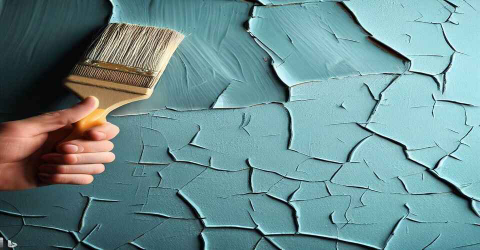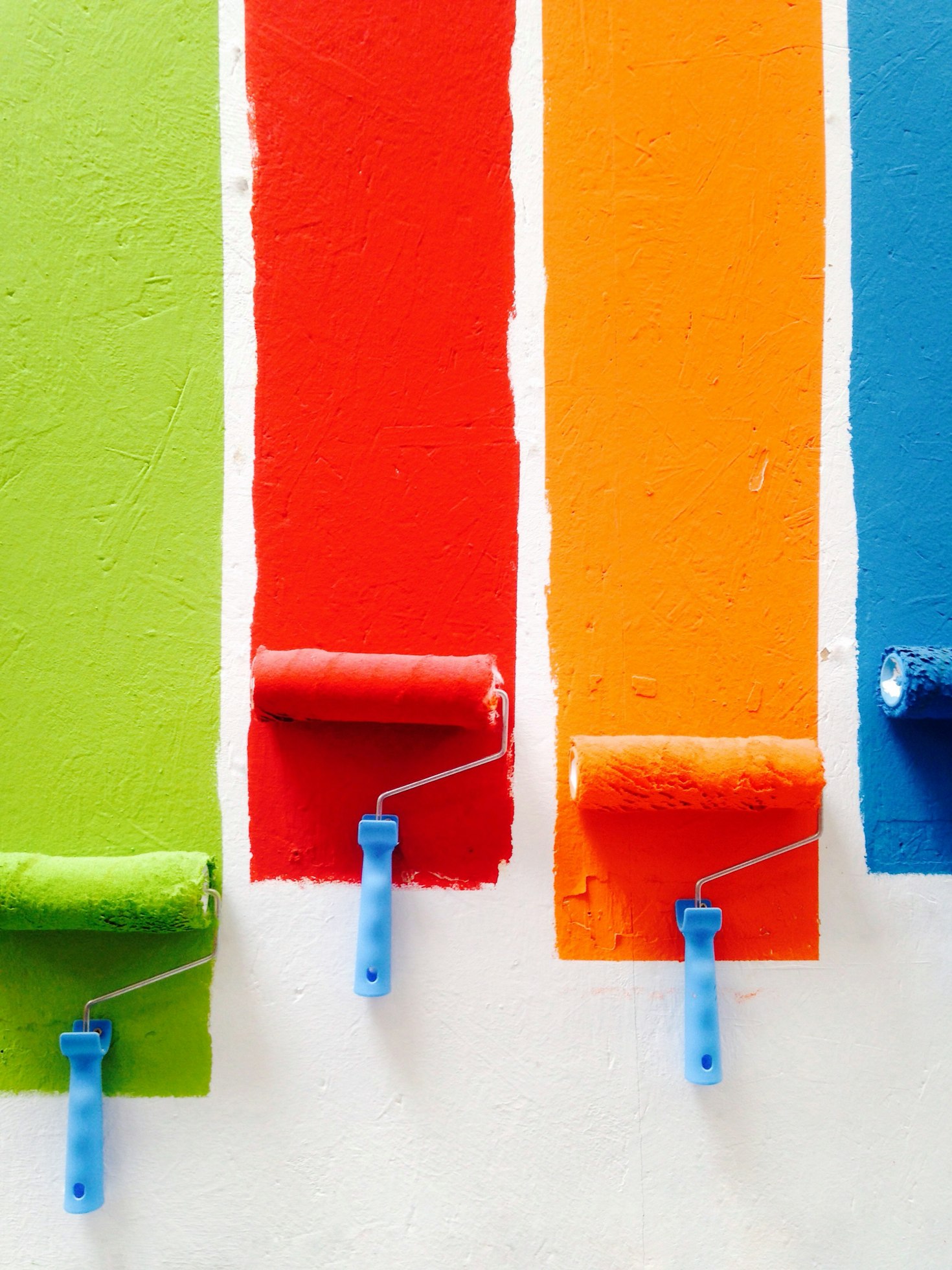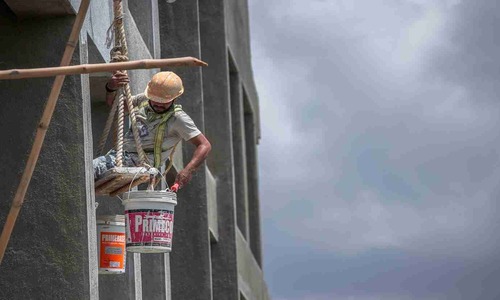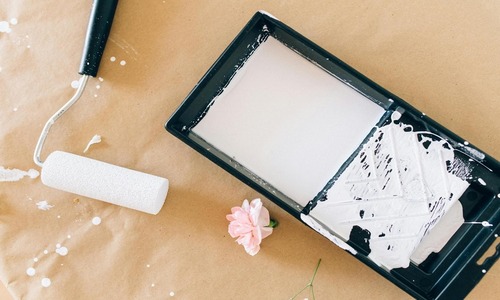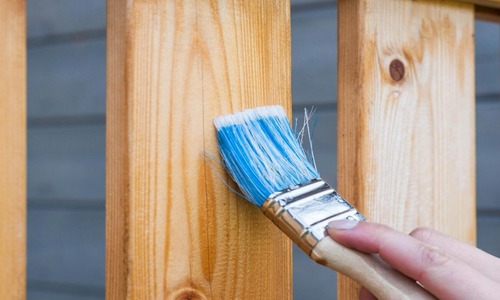Painting Over Cracked Paint – Everything You Need To Know

How Often to Paint House Interior – A Guide For Homeowners
August 18, 2023
What Is Limewash Interior Paint – Everything You Need To Know
September 20, 2023A fresh coat of paint can work wonders, breathing new life into a room and giving it a completely new personality. But what happens when your beautifully painted walls start showing cracks and imperfections? Paint that’s peeling and flaking off like a bad sunburn is a visual assault on your senses. And an unwelcome eyesore that no one wants to endure. To ward off the negativity brought by flaking paint, we are here to tell you everything you want to know about painting over cracked paint.
Painting Over Cracked Paint- Understanding The Dilemma
Peeling and flaking paint, quite frankly, are the bane of any homeowner’s existence. They’re the culprits behind walls that look like they’ve seen better days, ceilings that seem to be shedding tears, and exteriors that have lost their once-impeccable charm. Beyond the purely aesthetic discomfort, peeling and flaking paint can also signify deeper issues lurking beneath the surface. And it’s utterly important to resolve those issues before painting over cracked paint.
From understanding the root causes of this distressing dilemma to equipping you with the knowledge and skills needed for a remarkable paint job, we’re here to help you turn your space from an eyesore to a masterpiece.
Causes Of Cracked Paint And Why You Shouldn’t Ignore It
The silent and most common reason that your house looks like a creepy space with flaking paint out of a thriller documentary is moisture infiltration. Whether it’s due to leaks, condensation, or high humidity levels, water can work its way into the paint substrate, causing it to lose adhesion and bubble up. This ultimately results in cracked and peeling paint. If you find that the cause for cracked paint in your home is moisture intrusion, you must take adequate measures to prevent mold and mildew growth.
If you find hairline cracks in painted walls, the culprit is often low-quality paint or poor surface preparation. Failing to prep and prime surfaces properly before painting over them can lead to poor paint adhesion, resulting in premature cracking. Ignoring low-quality cracked paint can diminish the beauty and value of your property, making it less appealing to potential buyers or tenants.
Another reason for cracking paints can be extreme temperatures. The everchanging weather and extreme heat or cold, such as those experienced in outdoor environments, can cause materials to expand and contract. This results in cracks and peeling paint. Mostly, this occurs on exterior paint and ruins the aesthetics of our homes.
How To Transform Cracks Into Smooth Surfaces?
Now that you know the reasons, it’s time to learn how to fix cracked paint and restore the beauty of your house.
Inspecting The Cracks And Underlying Issues
Inspecting the cracks and underlying issues before painting over them is a crucial step to ensure the durability and quality of your paint job. You can start by closely examining the cracks in the existing paint. Take note of their size, location, and the direction in which they run. Different types of cracks will tell you about different causes and underlying problems. Before painting over cracked paint, it’s absolutely necessary to resolve these problems.
Preparing The Surface
Clean The Area: Use a damp cloth or sponge to remove dirt, dust, and any loose debris. For exterior surfaces, consider power washing to thoroughly clean the area.
Remove Flaking Paint: Scrape away any loose or flaking paint using a putty knife or scraper. This step is essential to create an even surface for the new paint to adhere to.
Sand And Smoothen It: Sand the entire surface to further smoothen it and create an even texture. You can use medium-grit sandpaper for this purpose.
Repair Cracks And Holes: “How to repair cracks in walls before painting” is a question that puts us off every time we think about changing cracked paint. However, it’s not something as tough as it sounds. To repair cracks, you must use a high-quality filler or patching compound to repair any cracks or imperfections in the surface. You must apply the filler with a putty knife, making sure to fill in all gaps and voids. Once the filler is dry, sand it until it’s in tune with the surrounding surface.
Prime The Surface
Applying a primer is a crucial step in preparing the surface. The primer helps the paint adhere properly and creates a uniform base for your topcoat. Choose a primer that is suitable for your surface type, such as a latex-based primer for drywall or an oil-based primer for certain exterior surfaces.
How To Paint Over Cracked Paint: Essential Supplies
Safety Equipment: Goggles, mask or respirator, nitrile gloves for handling paint.
For preparation: Painter’s tape, knife, damp cloth/sponge, paint scraper, medium-grit sandpaper (typically 120-150 grit), Sanding clock or pole, microfiber cloth to remove sanding dust, filler or patching compound, and primer.
For painting: Paint roller and roller covers, brushes (various sizes), paint tray and liners, and (most important) Paint of your choice.
Selecting Appropriate Paints
Selecting the right kind of paint is a game changer when it comes to the finished look and future maintenance. Choosing the appropriate paint for a specific surface is crucial to ensure the best adhesion, appearance, and durability of your paint job.
When it comes to inner walls and ceilings, latex paint is the go-to choice for many. It dries quickly, has low odor, and is easy to clean up with water. You can choose between flat, eggshell, satin, or semi-gloss finishes, depending on your desired look and level of washability.
It’s also great for most exterior surfaces. It’s best to get a high-quality exterior latex paint for wood, stucco, brick, and metal surfaces. However, in some cases, especially for certain types of wood surfaces or metal, oil-based paint may provide extra durability and adhesion. But before you run for oil-based paints, just know that it has a longer drying time and can be more challenging to clean up.
Choosing A Technique And Getting Started
There are multiple techniques for painting over cracked paint. However, choosing what suits you is the ultimate test. Here is how you can choose the right technique:
Brushing: This method involves using a paintbrush to manually apply paint. It’s ideal for detailed work, cutting in at corners and edges, and areas where precision is required.
Rolling: Painting with a roller is efficient for covering larger areas quickly. It’s suitable for flat surfaces like walls and ceilings, and it can provide a smooth finish when used correctly.
Spraying: Paint spraying is a technique that uses a paint sprayer to evenly coat surfaces, making it suitable for large areas or irregular surfaces. It’s often used for exterior painting and on surfaces like fences or furniture.
Once you have selected the technique you want to go for, it’s time to paint. The process is itself quite hectic and difficult. So, here’s a summarized version of it:
- For walls, start with cutting in (using a brush) at corners and edges, then use a roller for larger sections.
- Apply paint evenly with steady strokes, overlapping slightly.
- Check for drips or imperfections and correct them immediately.
- Allow proper drying time between coats and follow up with touch-ups if needed.
By choosing the right painting technique and following these steps, you can make sure that your paint job is even, well-adhered, and visually appealing.
Post-painting To-dos
Drying And Curing
After you’ve finished applying the paint, it’s crucial to allow it to dry fully, following the manufacturer’s instructions. You can do so by ensuring proper ventilation. Keep in mind that curing, which takes longer, involves the paint reaching its maximum hardness and durability. Be patient, as it can take quite a few days to weeks, depending on the type of paint used.
Cleanup
Cleaning your painting tools and brushes thoroughly after the job is essential. For latex paint, water is typically sufficient for cleaning, while oil-based paint may require paint thinner or mineral spirits.
Final Thoughts
Painting over cracked paint is not just about aesthetics; it’s about revitalization. It’s about breathing new life into your living spaces, restoring them to their full potential, and ensuring their longevity. And, it’s a daunting task that if not done correctly, will further ruin your spaces. Hence, it’s better to leave this to the professionals. Our team at Fish Painting LLC has the best professionals when it comes to painting and re-painting. Choose us today to see a beautiful transformation of your house!

